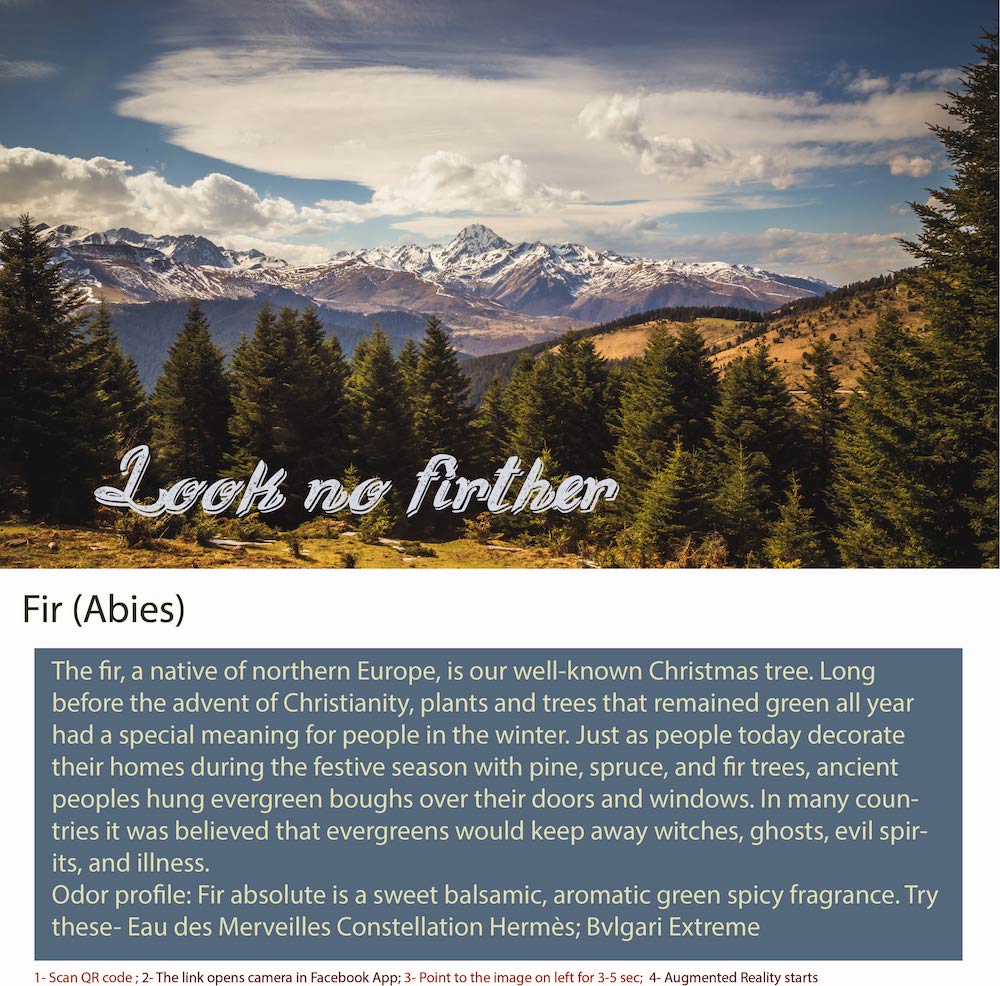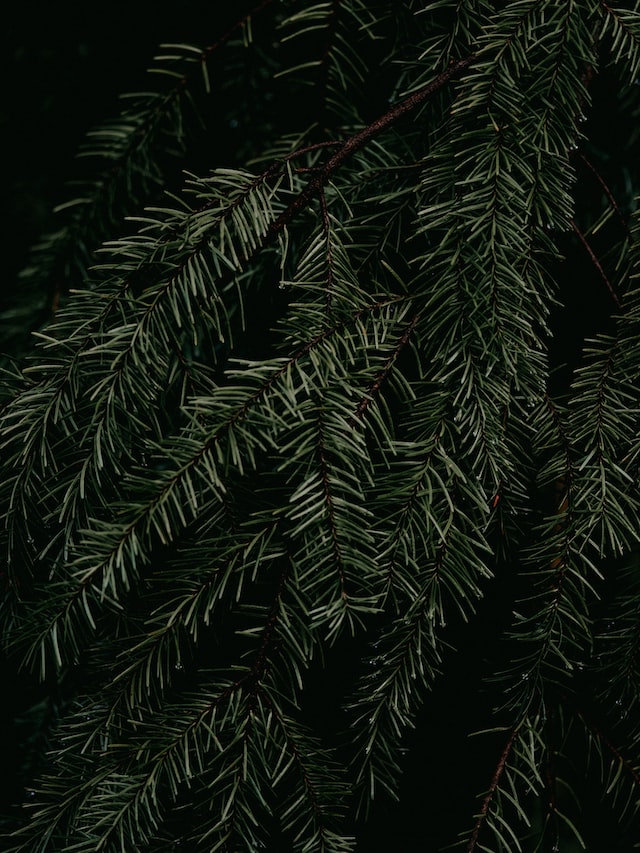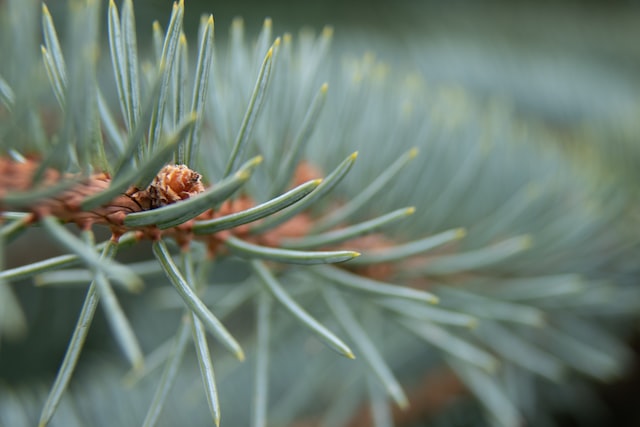The Essence of Fir in Perfumes
Fir: The Evergreen Elixir of Nature - From Perfumes to Fun Crazy Facts
Fir, the majestic evergreen tree with its towering presence and aromatic allure, has been revered in various cultures for centuries. This magnificent conifer holds a prominent place in various domains, including perfumes, fragrance, therapeutic oils, food, medicinal systems, history, and even fun crazy facts. In this article, we embark on a journey to explore the captivating allure of firs, uncovering their diverse uses and intriguing characteristics that have fascinated people around the world.
1. Fir in Perfumes and Fragrance
The resinous and woody aroma of fir has inspired perfumers to incorporate its essence into fragrances. The essential oil extracted from fir needles and cones exudes a fresh and invigorating scent that adds a touch of nature's embrace to perfumes. Fir extract is often used in fragrances that aim to evoke a sense of wilderness and serenity.
2. Fir in Therapeutic Oils
Fir essential oil is renowned for its therapeutic properties in aromatherapy. Inhalation of fir oil is believed to promote a sense of grounding and relaxation. The oil's soothing properties have made it a valuable ingredient in relaxation blends and meditation practices.
3. Fir in Culinary Delights
Firs are not commonly used as a primary ingredient in culinary creations. However, certain fir varieties, like the Douglas fir, are utilized for their tender tips, which have a unique citrusy flavor and are used as a garnish in certain dishes and beverages.
4. Fir in Medicinal Systems
Fir has a long history of use in traditional medicine for its potential health benefits. In various cultures, fir needles and resin have been used to create medicinal remedies for respiratory issues and skin conditions. The aromatic properties of fir have also been used in aromatherapy to alleviate stress and promote mental clarity.
5. Historical Significance of Fir
Firs have held cultural and historical significance in many societies. They have been used as symbols of strength, resilience, and protection in various folklore and mythology. Firs have also been associated with winter festivals and celebrations, symbolizing the everlasting spirit of life.
6. Fun and Crazy Facts about Fir
a. The Tallest Tree: Some species of firs, like the California redwood (Sequoia sempervirens), are among the tallest trees on Earth, reaching heights of over 300 feet.
b. Christmas Trees: Firs have been popular choices as Christmas trees for their evergreen nature and pleasant fragrance.
c. Resin Harvesting: Fir trees are tapped for their resin, which has been historically used for various purposes, including making varnishes and pitch for ships.
d. Fir Needle Tea: Fir needles have been used to make tea in some cultures, believed to have potential health benefits and a pleasant flavor.
e. Fir Cone Crafts: Fir cones are often used in crafts and decorations, adding a natural and rustic touch to various creations.
Fir, with its evergreen elegance and diverse applications, stands as an enduring symbol of nature's embrace cherished in perfumes, therapeutic oils, and beyond. From inspiring fragrances that transport us to a serene wilderness to their historical significance and intriguing fun facts, firs continue to captivate and inspire. Whether admired for their towering presence in the forest or appreciated for their aromatic essence in aromatherapy, firs' allure lies in their timeless connection to nature and their contribution to human well-being. As we celebrate firs' contributions to various aspects of human life, they stand as a testament to the enduring beauty and significance of evergreen elixirs in the tapestry of our natural world.
Fir, the majestic evergreen tree with its towering presence and aromatic allure, has been revered in various cultures for centuries. This magnificent conifer holds a prominent place in various domains, including perfumes, fragrance, therapeutic oils, food, medicinal systems, history, and even fun crazy facts. In this article, we embark on a journey to explore the captivating allure of firs, uncovering their diverse uses and intriguing characteristics that have fascinated people around the world.
1. Fir in Perfumes and Fragrance
The resinous and woody aroma of fir has inspired perfumers to incorporate its essence into fragrances. The essential oil extracted from fir needles and cones exudes a fresh and invigorating scent that adds a touch of nature's embrace to perfumes. Fir extract is often used in fragrances that aim to evoke a sense of wilderness and serenity.
2. Fir in Therapeutic Oils
Fir essential oil is renowned for its therapeutic properties in aromatherapy. Inhalation of fir oil is believed to promote a sense of grounding and relaxation. The oil's soothing properties have made it a valuable ingredient in relaxation blends and meditation practices.
3. Fir in Culinary Delights
Firs are not commonly used as a primary ingredient in culinary creations. However, certain fir varieties, like the Douglas fir, are utilized for their tender tips, which have a unique citrusy flavor and are used as a garnish in certain dishes and beverages.
4. Fir in Medicinal Systems
Fir has a long history of use in traditional medicine for its potential health benefits. In various cultures, fir needles and resin have been used to create medicinal remedies for respiratory issues and skin conditions. The aromatic properties of fir have also been used in aromatherapy to alleviate stress and promote mental clarity.
5. Historical Significance of Fir
Firs have held cultural and historical significance in many societies. They have been used as symbols of strength, resilience, and protection in various folklore and mythology. Firs have also been associated with winter festivals and celebrations, symbolizing the everlasting spirit of life.
6. Fun and Crazy Facts about Fir
a. The Tallest Tree: Some species of firs, like the California redwood (Sequoia sempervirens), are among the tallest trees on Earth, reaching heights of over 300 feet.
b. Christmas Trees: Firs have been popular choices as Christmas trees for their evergreen nature and pleasant fragrance.
c. Resin Harvesting: Fir trees are tapped for their resin, which has been historically used for various purposes, including making varnishes and pitch for ships.
d. Fir Needle Tea: Fir needles have been used to make tea in some cultures, believed to have potential health benefits and a pleasant flavor.
e. Fir Cone Crafts: Fir cones are often used in crafts and decorations, adding a natural and rustic touch to various creations.
Fir, with its evergreen elegance and diverse applications, stands as an enduring symbol of nature's embrace cherished in perfumes, therapeutic oils, and beyond. From inspiring fragrances that transport us to a serene wilderness to their historical significance and intriguing fun facts, firs continue to captivate and inspire. Whether admired for their towering presence in the forest or appreciated for their aromatic essence in aromatherapy, firs' allure lies in their timeless connection to nature and their contribution to human well-being. As we celebrate firs' contributions to various aspects of human life, they stand as a testament to the enduring beauty and significance of evergreen elixirs in the tapestry of our natural world.
To experience augmented reality, please open the Facebook-app using QR code and point to the image below
Fir refers to a type of evergreen tree in the genus Abies. They are commonly found in the northern hemisphere and are known for their tall, conical shape and needle-like leaves. Firs are often used as Christmas trees and for timber production. Some common species of fir include the Douglas fir, balsam fir, and white fir.
Captivating Aromas of Natural Fir
Firs have been present on the earth for millions of years, with fossil evidence dating back to the Triassic period. Historically, fir trees have been used for a variety of purposes by different cultures. In ancient times, the Greeks and Romans used fir resin for medicinal purposes and as incense. In the Middle Ages, fir wood was used to build ships, while in the 19th century, fir and other conifers were logged extensively for their timber.
Firs have also played a role in cultural and religious practices. For example, the ancient Celts believed that fir trees had protective powers, and in many Christian cultures, the fir tree has been used as a symbol of immortality. In modern times, the most common use for fir trees is for Christmas trees and ornamental landscaping.
In addition to this, Fir also been used for production of paper, plywood and for reforestation.
Firs have also played a role in cultural and religious practices. For example, the ancient Celts believed that fir trees had protective powers, and in many Christian cultures, the fir tree has been used as a symbol of immortality. In modern times, the most common use for fir trees is for Christmas trees and ornamental landscaping.
In addition to this, Fir also been used for production of paper, plywood and for reforestation.
Crafting Distinctive Perfumes with Fir Notes
Fir trees have been used for their therapeutic properties for centuries. The essential oil extracted from fir needles has been used in aromatherapy to help with respiratory issues, such as asthma, bronchitis, and sinus congestion. The oil is also believed to have anti-inflammatory and pain-relieving properties.
Inhaling the aroma of fir oil is thought to help clear the lungs and sinuses, as well as boost the immune system. It's also used in massage therapy to help relieve muscle and joint pain. The oil is also used in a variety of skincare products due to its anti-inflammatory and antioxidant properties.
Fir needle tea is also a traditional remedy for respiratory issues, it is said to have a calming effect on the body, helping to reduce stress and tension.
It's also believed that spending time in a forest of fir trees can have a positive impact on mental well-being, helping to reduce stress, anxiety and depression, thanks to the phytoncides (essential oils) released by the trees. This is known as "forest bathing" or "Shinrin-yoku" in Japan.
It's important to note that while the above information is based on traditional usage, scientific studies on the therapeutic benefits of fir trees are limited and more research is needed to confirm its effectiveness. It's always best to consult with a healthcare professional before using any natural remedies.
Inhaling the aroma of fir oil is thought to help clear the lungs and sinuses, as well as boost the immune system. It's also used in massage therapy to help relieve muscle and joint pain. The oil is also used in a variety of skincare products due to its anti-inflammatory and antioxidant properties.
Fir needle tea is also a traditional remedy for respiratory issues, it is said to have a calming effect on the body, helping to reduce stress and tension.
It's also believed that spending time in a forest of fir trees can have a positive impact on mental well-being, helping to reduce stress, anxiety and depression, thanks to the phytoncides (essential oils) released by the trees. This is known as "forest bathing" or "Shinrin-yoku" in Japan.
It's important to note that while the above information is based on traditional usage, scientific studies on the therapeutic benefits of fir trees are limited and more research is needed to confirm its effectiveness. It's always best to consult with a healthcare professional before using any natural remedies.
Exploring Scentopia Singapore's Perfume Artistry
The scent of fir trees is often described as fresh, piney, and woodsy. The aroma is due to the essential oils present in the needles of the tree. These oils are a combination of terpenes, such as pinene and limonene, which give off the characteristic piney scent. The scent of fir trees can vary depending on the species, with some having a stronger aroma than others.
Fir tree essential oil is often used in aromatherapy and other scented products, such as candles, air fresheners, and cleaning products, because of its fresh, invigorating aroma. The essential oil can also be used to make natural perfumes and colognes.
Some of the fir species that are known for their strong aroma include the Douglas Fir, Balsam Fir, and White fir. The aroma of these species is often used to create the traditional Christmas tree scent.
It's important to note that the scent of fir tree can be quite different from one tree to another, and from one species to another.
Fir tree essential oil is often used in aromatherapy and other scented products, such as candles, air fresheners, and cleaning products, because of its fresh, invigorating aroma. The essential oil can also be used to make natural perfumes and colognes.
Some of the fir species that are known for their strong aroma include the Douglas Fir, Balsam Fir, and White fir. The aroma of these species is often used to create the traditional Christmas tree scent.
It's important to note that the scent of fir tree can be quite different from one tree to another, and from one species to another.
Aromatic Harmony: Blending Fir with Other Notes
Fir needle essential oil is a popular ingredient in perfumery, and is used to create a variety of scents, from fresh and piney to woodsy and earthy. Some of the famous fir perfumes include:
- Jo Malone Pine & Eucalyptus: This scent features a mix of pine and eucalyptus, creating a fresh and invigorating aroma.
- Tom Ford Grey Vetiver: This scent features a mix of woodsy and earthy notes, with a hint of fir needle.
- Diptyque Eau des Hôtes: This scent is a fresh and woodsy, with notes of pine and fir needle.
- Jo Loves A Fragrance: This scent features a mix of fir needle, pine, and cedar, creating a fresh and invigorating aroma.
- Le Labo Santal 33: This scent features a mix of woodsy and earthy notes, with a hint of fir needle.
- Le Labo Pine Tree: This scent features a mix of pine and fir needle, creating a fresh and invigorating aroma.
Join Scentopia, Sentosa's latest tourist attraction wonderful orchid scent crafting, fragrance tour, bridal shower or corporate team building which includes perfume making onsite and offsite, beach activities and more. We also serve primary school learning journey, secondary students and pupil on industrial excursions. Know more about our orchids perfume bar or therapeutic orchid scents and other wellness aromas. Conatct Perfume workshop or book a scent crafting session here.






